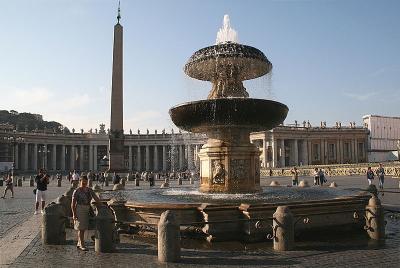Pope turns off Vatican fountains amidst drought

VATICAN CITY - Pope Francis has ordered for the Vatican’s 100 fountains to be turned off as Rome faces a drought. The small papal state could not ignore the problems its neighbour has been facing recently.
The Vatican City’s daily newspaper, l'Osservatore Romano, explains that the decision made by the pontiff on Monday is in line with “Laudato si’”, his 2015 encyclical on the environment and sustainable development. In the text, the pope warns against the habit of wasting and throwing away, something which has now reached “levels unheard of,” while “clean water is a matter of primary importance because it is indispensable for human life and for supporting ground and water ecosystems.”
Aside from some of the outdoor fountains, where drinking water flows, almost all of the Pope's fountains are supplied by the Acqua Paola aqueduct, a non-drinking water, which is used for irrigation of the gardens, the fire network and for the toilets. A water recycling circuit has been activated for some fountains.
Gone are the days of water fights in St Peter’s Square, or in the Italian gardens inside the Leonine Walls, or the in the Aquila fountain, the largest of them all. Also affected are the fountains inside, leading along the path to the summit of the hill, where the former Pope Benedict lives, in the Mater Ecclesiae monastery. Fountains designed by great architects and sculptors such as Borromini, Carlo Maderno, Bernini and Giovanni Vasanzio. are being turned off.
This is not a long-term solution to the problems, but what counts here is the public gesture as an example to the world. As Roman mayor Virginia Raggi and President of Lazio Nicola Zingaretti argue about who should find a solution to prevent the Romans from having to give up the water flowing from their faucets, and the majority of the town’s “nasoni” fountains are dry, the pope, in a surprise move, turns off all the Vatican fountains.
The Vatican Radio announces on its site: "The drought that is affecting the city of Rome and the surrounding areas of the capital has also led the Holy See to undertake measures for saving water.”


